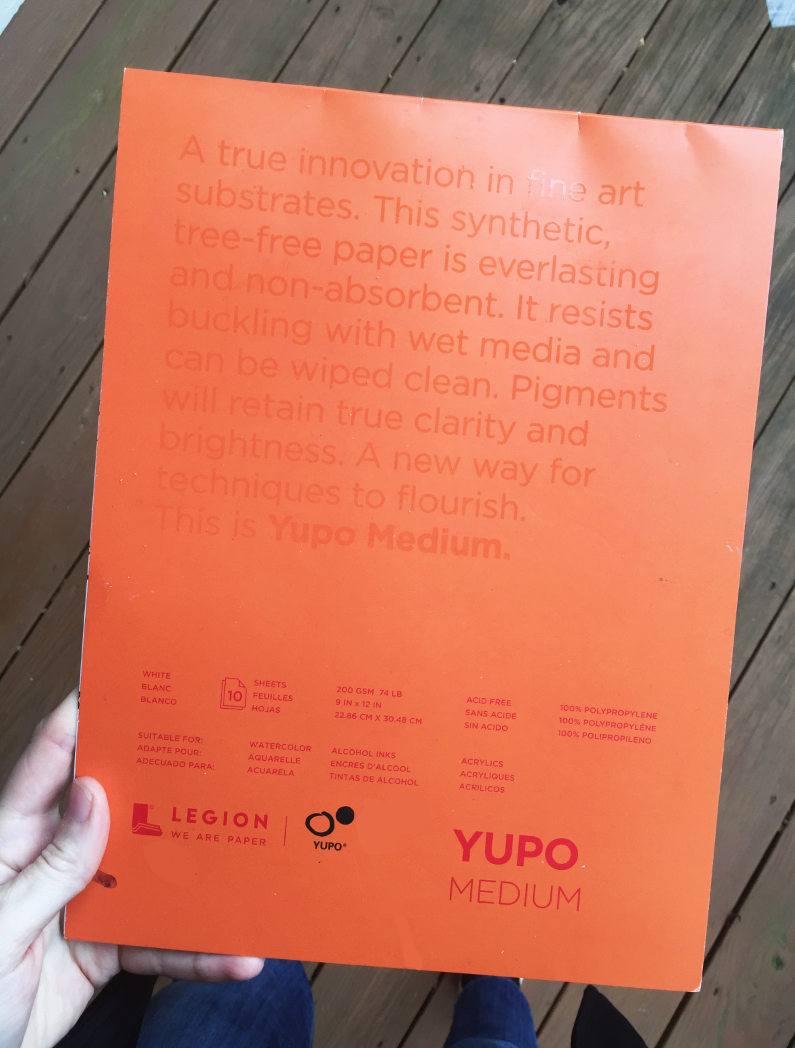After bringing a pad of Yupo paper home from the supply art store, before even touching it, I Googled everything about it. Like an uncharted mountain, it was too unknown to just charge in without a plan.
Made out of polypropylene pellets, Yupo 'paper' is a synthetic paper and it owned and distributed by Yupo. As a description for the paper, the cover of Legion's offering of the product reads off an announcement in orange, embossed letters:
"A true innovation in fine art substrates. This synthetic, tree-free paper is everlasting and non-absorbent. It resists buckling with wet media and can be wiped clean. Pigments will retain true clarity and brightness. A new way for techniques to flourish. This is Yupo Medium"
It reads like words from The Steve Jobs of paper pacing across a keynote stage, announcing innovations to an audience of enraptured and hopeful artists.
The closest comparison with Yupo must be Duralar or mylar, only Yupo is not translucent. Smooth, but with tooth. Fast, but not slippery. Matte, but not powdery or rough. It's really a different experience. It can be recycled, but only as a category 5 item, which would put it in the same bin as plastic take-out containers, tupperware, and plastic cups.
Just to get started, I tried out Caran D'Ache Watercolor Pencils on Yupo.
At first I was just playing around with color, and later, dismayed by the pastel/light appearance of the watercolors, I splashed bright pink acrylic ink over the surface. This brightened the paper substantially.
Next, I added a figure of a sitting woman reading her phone.
I like to test paper and new mediums the same way every time:
1. Draw something abstract or just PUT THE MEDIUM ON THE PAPER
2. Draw something more controlled, something that is trying to be something
Yupo paper is so smooth and that this testing-method may be the best way to draw on it all the time. If you make a mistake, everything can wipe clean if it is undried, so there is little risk of messing up. But, on the other hand, controlling where the water goes and getting it to do what you want the first time is like capturing a unicorn. It's quite mercurial stuff.
It's also possible to remove dried color from this particular Yupo paper using rubbing alcohol. So, even if you want to make a late-game change, it's possible to redeem a piece with many dried layers.
LAYERING is the key for getting watercolors on Yupo to look really good. Without layers, they tend to look pastel or light. You have to be okay with chaotic things happening. You can usually change what happens, but not totally revoke it.
I'm unfashionably late to the Yupo train, but what is great about being late is that you can now get Yupo paper at almost any art store. It's new and exciting paper, and it's everywhere. :)
Cheers my friends and until next time!



